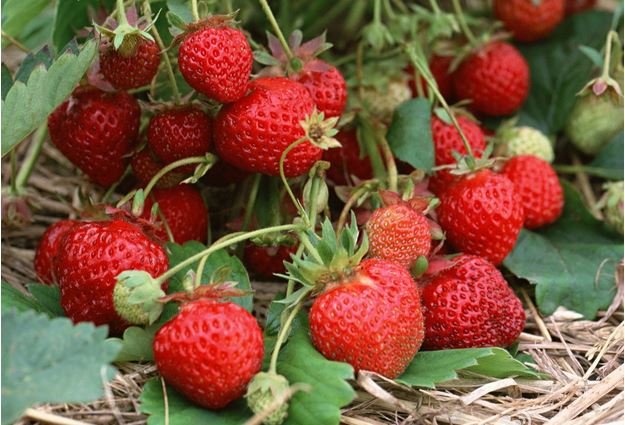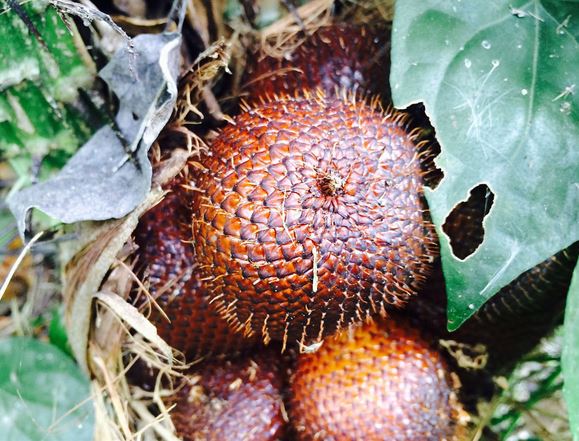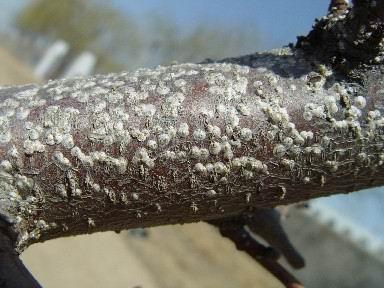What conditions and time are needed for Strawberry planting techniques and Management of Strawberry planting in greenhouse
Strawberries are rich in a variety of nutrients and are favored by consumers in the market. with the improvement of science and technology and the development of strawberry varieties, strawberries are getting bigger and bigger in the market, and growing strawberries has almost become the main source of income for farmers. so what conditions do you need to grow strawberries? Let's take a look at the conditions, methods and time needed for strawberry cultivation, and the related knowledge of strawberry planting technology and management in greenhouse.

Strawberry planting conditions 1, soil: strawberries should grow in fertile, loose neutral or slightly acidic loam, too clayey soil is not suitable for cultivation, sandy soil more stable fertilizer, frequent irrigation, can also grow strawberries. 2. Temperature: strawberry likes warm and cool climate, strawberry root growth temperature is 5-30 ℃, optimum temperature is 15-22 ℃, suitable temperature for stem and leaf growth is 20-30 ℃, bud freezing occurs at-15-10 ℃, temperature should be maintained at 5-15 ℃ during flower bud differentiation and 4-40 ℃ at flowering and fruiting stage. When strawberries pass the summer, shading measures should be taken when the temperature is higher than 30 ℃ and the sunshine is strong. 3. Light: strawberry is a light-loving plant, but it has strong shade tolerance. When the light intensity is strong, the plant is short and strong, the fruit is small, the color is dark and the quality is good. Medium light, large fruit, light color, low sugar content, long harvest time; too weak light is not good for strawberry growth. 4. Moisture: strawberry has shallow root distribution, large transpiration and strict requirements for water, but it has different growth periods. Strawberries have slightly different requirements for moisture. For early spring and flowering coral, the lint percentage per grass is less than 70% of the maximum soil water holding capacity. The demand during fruit growth and ripening period is more than 80%. After harvest, the stolon and new adventitious roots are extracted, and the soil water content is not less than 70%. Autumn is the period of plant nutrition accumulation and flower bud formation, and the soil moisture should not be less than 60%. Strawberries are not tolerant to waterlogging, requiring good soil permeability and paying attention to drainage in the rainy season. Strawberry planting time strawberry is generally planted in spring, autumn, or even the four seasons, because it belongs to perennial plants. Strawberries are planted for a period of three years. Only a small amount of strawberries can be harvested in the first year, and a lot will be harvested in the second year, but after the third or third year, the yield of strawberries will decline significantly and the plants need to be replaced. Strawberry planting method 1, garden selection and soil preparation strawberry growth adaptability to the soil is very strong, the general land can be planted. However, strawberries have the characteristics of light, water, fertilizer and fear of waterlogging, so the garden mostly chooses loam or sandy loam with high topography, flat ground, loose soil, convenient drainage and irrigation, good light and rich organic matter. Strawberry prefers neutral or slightly acidic soil, and the suitable PH value is 5.5-7.0. The planting bed must be fine, otherwise it will seriously affect the survival rate of seedling planting and the growth after slow seedling. Make the border surface and ridge straight, and the soil is fine and flat. Irrigate the ground 2-3 days before planting seedlings and settle the soil. 2. Seedlings should be planted on cloudy days or after four or five o'clock in the afternoon to avoid sun exposure. Seedlings should be planted with disease-free seedlings with 3-5 leaves, more than 10 new roots and full terminal buds. Planting depth is the key to seedling survival. Too deep and too shallow planting will cause seedling death. The correct method is to level the neck of the seedling root with the ground, bow back outward so that the root is not buried and shallow, and let the root system fully extend. After planting, compaction the soil vigorously, immediately pour water after planting, and irrigate for 3-4 days. Check in time after watering, and replant the silted seedlings, root seedlings and crooked seedlings according to the requirements. After planting, if you encounter a sunny day and hot sun, it is best to use Reed curtains or leafy branches to shade the sun.
3. Management after planting strawberries survive planting, weeding with shallow ploughing, timely removal of diseased leaves, old leaves and stolons, and concentrated destruction. When there are two new unfolded leaves, in addition to watering thoroughly after fertilization, we should also pay attention to watering at ordinary times to maintain soil moisture. Cover against cold to make strawberry seedlings green to survive the winter and maintain soil moisture. Plastic film mulching is needed before the beginning of winter, which is also a technology to increase production. Cover with 0.008-0.015mm thick polyethylene film, cover the seedlings according to the width and length of the border, the plastic film should be stretched and paved closely with the border surface, and the surrounding of the film should be pressed tightly with soil. 4. Spring management: remove the plastic film when the seedlings begin to sprout in early spring, and break the film to lift the seedlings in Baoding area in mid-late March, that is, aim at the seedlings under the film on the film, pull the film open a small hole, not too big, and then use your fingers to gather the seedling leaves under the film to the film, and to expose the bud core, the plastic film remains in the same place to press, continue to cover, and remove the dry old leaves. 5. After fertilizing, watering, breaking film and lifting seedlings, the soil is generally wet, so don't rush to water. The first water in the beginning of spring can be postponed to the bud stage, but it should also be noted that there are many early spring breezes and dry climate, and soil moisture should be checked at any time. When the surface is dry, it should be watered in time. More water is needed from bud stage to early flowering stage, and watering should be sufficient. In case of drought during fruit harvest, watering should be done in the evening, night or the next morning after harvest. But to pour a small amount of water, in case the fruit is soaked to cause rotten fruit, if there are conditions, it is best to use drip irrigation, the effect is better. 6. The ripening period of strawberry cultivation in open field is mostly concentrated in May and June, when the temperature is high and the weather is hot. In order to keep the fruit fresh, the harvest should be carried out in the morning or evening when the temperature is low. This can improve the fresh rate and intact rate of strawberry fresh fruit. Strawberry planting technology and management in the greenhouse 1. Timely buckle the greenhouse for heat preservation generally when the temperature drops below 5 ℃, the strawberry cultivation bed should be covered with a semicircular arch shed and covered with colorless plastic film. Pay attention to ventilation in the initial stage of buckling shed to prevent more than 30 ℃ in the shed, especially around noon when there are no clouds and strong sunlight in sunny days, and high temperature burning seedlings should be prevented. In addition, when the lowest temperature in the greenhouse is about 5 ℃, cover the greenhouse film with paper quilt or grass to keep warm at night, and remove it in time after sunrise during the day, so as to increase daylight exposure, increase the temperature in the greenhouse, and beware of freezing injury or retting roots. Enter a few cold days, if the highest temperature in the shed is below 10 ℃, do not take off the covered thermal insulation material during the day to facilitate strawberries to survive the winter safely. After the "May 9" and "69" days, when the external temperature is stable above 0 ℃, the paper quilt or grass quilt can be removed after sunrise during the day, but it should be covered in time before sunset in the evening to maintain a higher temperature in the arch shed. When the temperature in the small arch shed is stable above 5 ℃ at night, the cover can be removed, weather changes can be paid attention to at any time, and timely ventilation can prevent the harm of high temperature.
2. The phenomenon of early budding and early flowering is easy to occur in the production process of strawberry in greenhouse. This phenomenon occurs too often, which will seriously affect the yield and quality of strawberries. The phenomenon of early budding and early flowering of strawberries in greenhouse is related to the following factors: first, it is related to the characteristics of varieties. The varieties with easy differentiation of flower buds and shallow dormancy, such as Lihong and Qiuxiang, etc., need only about 50 hours of dormancy, need less low temperature during the dormancy period, and are prone to early buds. Second, it is related to the premature differentiation of flower buds caused by fertilizer and pseudo-planting. On the one hand, before seedling raising to flower bud differentiation, if there is less nitrogen absorption, strawberry flower bud differentiation often occurs earlier; on the other hand, if the pseudo-planting time is too late, the pseudo-planting seedlings are too small, or the soil on the pseudo-planting bed is too dry or too wet, and insufficient fertilizer can make strawberry flower buds differentiate prematurely. All these will cause early budding and early flowering of strawberries after planting. In order to prevent early budding and early flowering of strawberries, the following points should be done in production: first, select suitable varieties. The varieties with shallow dormancy should be selected for cultivation in greenhouse. If you choose a variety with strong dormancy, thermal insulation should not be covered too early. The second is to fertilize reasonably, strengthen management and cultivate strong seedlings in the process of raising seedlings. By removing old leaves, removing inflorescences, straightening out stolons and spraying gibberellin, we can strengthen the management of mother plants and produce high-quality strong seedlings. Third, pay attention to control the temperature after withholding the shed. The temperature in the greenhouse is controlled below 25 ℃ during the day and above 0 ℃ at night. In the severe winter, through the small shed in the greenhouse, thickening cover, erecting wind barriers and other heat preservation measures to ensure the normal development of strawberries. For the plants that have already produced early buds and early flowers, we should remove the buds in time, strengthen the management of fertilizer and water, promote the flowering and fruiting of axillary buds and reduce the loss. 3. To strengthen the management of fertilizer and water, strawberry in greenhouse has a long fruiting period, and reasonable topdressing should be applied on the basis of re-application of base fertilizer to meet its nutritional requirements. Topdressing takes the principle of "a small amount and many times". From buckling shed to budding, shallow water can be applied once in about 10 days, 10 kg of urea per mu, 5-8 kg of calcium superphosphate and potassium chloride each. In addition, in the middle and later stage, it can be combined with spraying, foliar spraying multi-element micro-fertilizer or phytin and other organic nutrient solution to improve the fruit weight and sugar content of strawberry. The temperature in the greenhouse is too high and the soil water evaporation is large, so it should be irrigated in time. In the early stage, the external temperature was high, and irrigation was carried out in the evening; in the later stage, the temperature inside and outside the greenhouse was lower, and irrigation was carried out in the morning. After irrigation, first increase the temperature of the shed, and then increase the air volume and reduce the humidity. Don't water too often and water thoroughly every time. Stop watering one week before flowering, and water once 15 days after flowering combined with fertilization. 4. It is an effective measure to prevent the abnormal fruit of strawberry in greenhouse by planting some varieties with large amount of pollen in the main varieties. The varieties planted by the landlords are Baojiao Zaosheng, and the pollinated varieties are Chunxiang, Fengxiang, etc., which are generally planted at 5% and 10%. Strawberry can not be sprayed with pesticides during flowering to prevent the decrease of pollen germination rate, affect fertilization and produce deformed fruit. Strawberry can be used to control the disease before flowering, pull out the diseased plant in time after flowering, remove the diseased leaves and inflorescences, and control the spread of the disease. When the soil moisture is insufficient, the dark irrigation of plastic film between ridges should be carried out in time. When lack of fertilizer, combined with watering, apply 45% ternary compound fertilizer 15 kg per mu, do not apply ammonium bicarbonate. After the fertilizer is diluted with water, the effect of drilling and topdressing is better, which can promote fertilizer with water and meet the needs of normal flowering and fruiting of strawberries. When each batch of flower buds of strawberries in the greenhouse is formed, bees are placed in the greenhouse, and 5000 of them are kept in each standard shed, so that the pollination rate can reach 100%. The release time is 8-9 am and 3-4 pm. 5. To control diseases and insect pests, strawberry is cultivated in a small arch shed. Due to the high temperature and humidity in the greenhouse, diseases such as powdery mildew and gray mold are easy to occur and underground pests harm strawberry plants. For pests, 25% phoxim can be sprinkled in the soil or mixed with fine soil before planting, or trichlorfon powder can be used to control the soil. For diseases, 40% methyl topiramate 300-400 times or 240 times Bordeaux solution should be sprayed in time after film mulching.
Time: 2019-05-05 Click:
- Prev

The nutritional value, efficacy and function of Snake skin Fruit when to eat Snake skin Fruit
The appearance of snake skin fruit looks very similar to snake skin, sweet and crisp taste, and rich in nutritional value, is a famous fruit in Southeast Asia, it is said that snake skin fruit also has the effect of beauty and beauty, deeply loved by people. Let's follow the editor to learn about the planting methods, nutritional value, efficacy and taboos of snake skin fruit.
- Next

How do scale insects and their species identification come from? Are plant scale insects parasitic and harmful to humans?
The shell insect is a kind of small insect, and it is also one of the pests that many fruit growers and flower friends hate extremely. It mainly harms fruit trees and trees, and is one of the most common pests on flowers. Its reproductive ability and drug resistance are very strong. It is generally difficult to control or eradicate how shell insects come from.
Related
- Fuxing push coffee new agricultural production and marketing class: lack of small-scale processing plants
- Jujube rice field leisure farm deep ploughing Yilan for five years to create a space for organic food and play
- Nongyu Farm-A trial of organic papaya for brave women with advanced technology
- Four points for attention in the prevention and control of diseases and insect pests of edible fungi
- How to add nutrient solution to Edible Fungi
- Is there any good way to control edible fungus mites?
- Open Inoculation Technology of Edible Fungi
- Is there any clever way to use fertilizer for edible fungus in winter?
- What agents are used to kill the pathogens of edible fungi in the mushroom shed?
- Rapid drying of Edible Fungi

